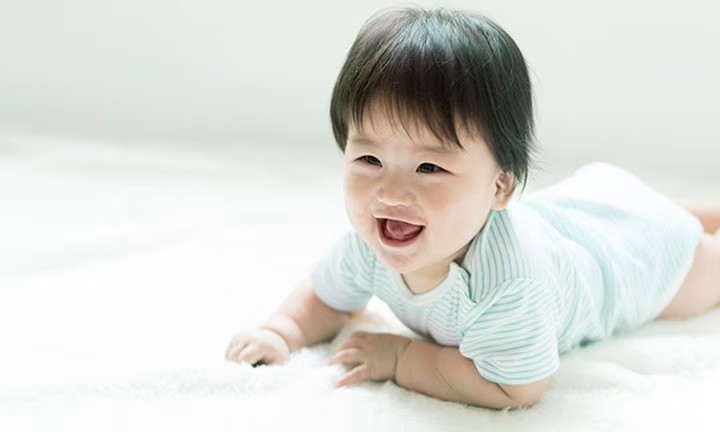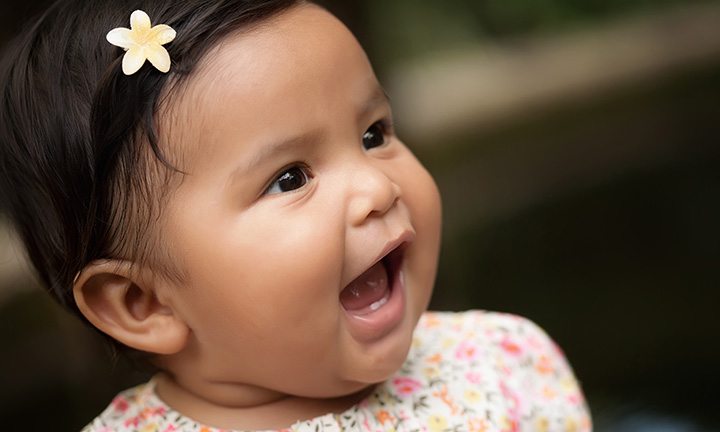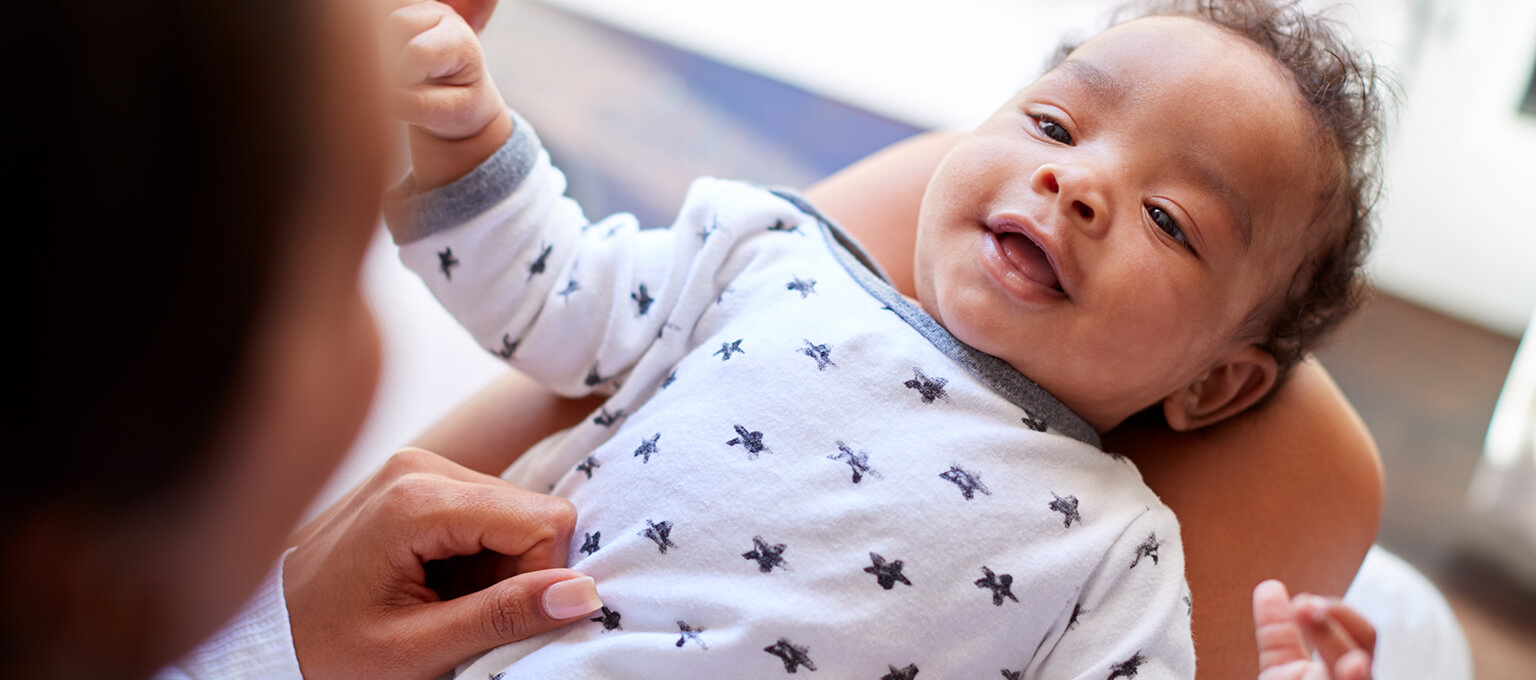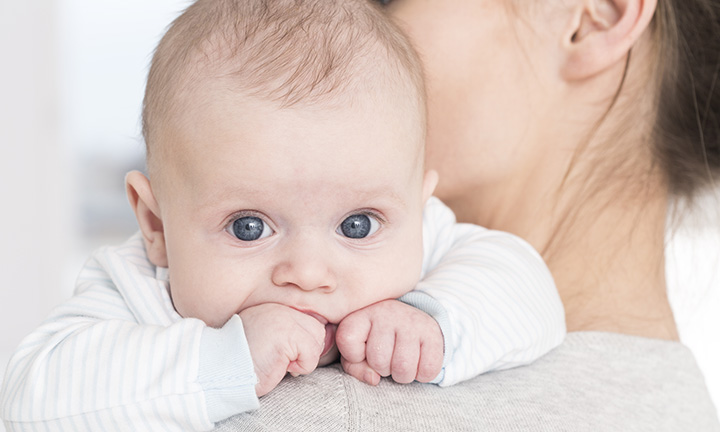
When Do Babies Start Cooing?
Hearing your baby’s first sounds is a treasured moment! And did you realise that this is your little one communicating with you? Even as a newborn, you’ll notice adorable little sounds from them, such as crying and gurgling. But when do babies start to coo and make other sounds, and what is cooing? Read on to find out more about this exciting milestone, when it occurs and how to support your baby’s language development.
What Is Cooing?
Cooing refers to single-vowel sounds, such as ‘ooh’ and ‘aah’. Sometimes the noise your baby makes sounds like the word ‘coo’, which is where the action gets its name. A cooing baby is making their first attempt at expressive language, which is why this is such an exciting development milestone for your little one!
Though you’ll likely hear other baby noises before cooing starts, common crying and grunting are sounds that originate from the chest. Cooing shows that your baby is developing the muscles needed for talking and is learning to control these muscles.
Cooing is obviously adorable, but why do babies make noises like this? Baby cooing is a way for children to communicate with you and express happiness and contentment before speaking. They’re also trying to imitate the vowel sounds that they hear when you’re chatting with them. Your little one might also coo for self-entertainment or to get your attention.
When Do Babies Start Cooing?
Baby cooing may start when your little one is around 2 months to 4 months of age. But every child is different and develops at their own pace, so your baby might start to coo earlier or later than other children, and that’s OK.
Like every other language milestone, baby cooing takes time to develop. Before your little one starts cooing, they are able to identify you by your voice, even if you're not in the same room. When you speak to your little one, they may begin to smile and gurgle at you; your delighted reaction and responses help teach them the concept of a two-way ‘conversation’.
Creating new sounds such as cooing is the next step for your baby. Before long, they'll be using their tongue and lips to create even more precise sounds. Your little one has already come a long way in terms of language development and communication, but the adventure has just begun!
Baby Noises: From Grunting to Talking
After ‘when do babies start cooing?’ comes the question ‘when do babies start talking?’ Your little one is rapidly developing language and communication skills, and it might help to understand what they’re experiencing.
So, when do babies start making sounds, and how does a baby go from gurgling to cooing to babbling and speaking? Here’s a brief timeline of what many refer to as ‘baby talk’:
How to Encourage Your Baby to Talk
Baby cooing is an exciting and endearing language development milestone, and you might be wondering how to support and encourage your little one's baby talk and progress. Here are a few things you can do to encourage those sweet baby cooing sounds:
Baby Not Cooing: What Does It Mean?
Every child is unique and develops at their own pace, and some reach typical milestones later than others. If your baby isn’t responding to or making any sounds by 6 months, or they haven’t started babbling by 9 months of age, contact your child's health visitor for more advice.
Instead of focusing on cooing alone, pay attention to your baby’s range of sounds and tones. Contact their health visitor if your baby’s babbling isn’t tuneful and appears to be all in one tone.
FAQS AT A GLANCE
Cooing is an early and important step in your baby’s language development. It is their way of communicating with you and trying to imitate the vowel sounds that they hear you make. Cooing usually begins with sounds such as ‘ooh’ and ‘aah’.
The Bottom Line
Baby cooing is just one step in your little one’s long language journey. But it’s certainly an important achievement, as it’s your baby’s first attempt at expressive language. Feel free to celebrate and enjoy this milestone, knowing there’s much more to come!
In anticipation of this memorable achievement, you might ask, ‘When do babies start cooing?’ and want an exact answer. Remember that babies develop at their own pace, so not every child will start cooing at the same age. Typically, babies start making cooing sounds around 2 to 4 months old, but it can occur earlier or later.
The best way to encourage and support your child’s cooing and language journey is to talk to them from birth. Babies learn to talk before they can actually speak by listening to you! You can also read children’s books with pictures, describe situations and use consistent language.
Remember that your little one is on their own path, and cooing, babbling and talking will all come in time. Contact your child's health visitor if you have any questions or concerns.
How We Wrote This Article The information in this article is based on the expert advice found in trusted medical and government sources, such as the National Health Service (NHS). You can find a full list of sources used for this article below. The content on this page should not replace professional medical advice. Always consult medical professionals for full diagnosis and treatment.
Read more about Newborn Baby
Related Articles
Join Pampers Club and get:















